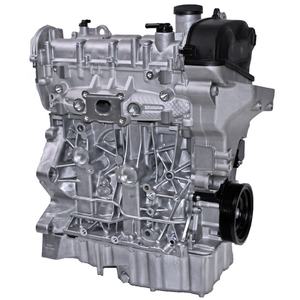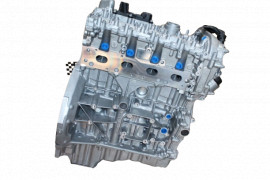Opel Corsa Engine: Top Tips for Upkeep and Treatment
Opel Corsa Engine: Top Tips for Upkeep and Treatment
Blog Article
Exploring the Inner Workings of a Compact Automobile's Engine System
As chauffeurs, we usually take for provided the complex processes that happen within the boundaries of our car's engine system. The small yet complicated machinery that moves us onward is a wonder of engineering precision and sychronisation. From the regulated explosions in the combustion chamber to the thorough timing of fuel injection, every part plays an essential function in the smooth procedure of the engine. In this exploration of a portable car's engine system, we will decipher the internal functions of this mechanical symphony, clarifying the mysteries that drive us ahead on our day-to-day journeys.
Burning Process Overview
The combustion procedure in a small car's engine system is a critical device that successfully converts fuel into power to power the vehicle. This process occurs within the burning chamber of the engine, where gas and air mix, ignite, and generate regulated explosions. The burning process is composed of four main stages: consumption, exhaust, compression, and power.
Throughout the intake phase, the piston relocates downward, reeling in a blend of air and fuel into the combustion chamber. The next stage, compression, involves the piston moving upward, pressing the air-fuel mix to increase its strength. Consequently, in the power stage, the ignition system stirs up the compressed mixture, causing a fast expansion of gases that requires the piston back down. This descending motion creates the power needed to drive the car. Lastly, in the exhaust phase, the scorched gases are expelled from the combustion chamber through the exhaust shutoff, preparing the chamber for the following cycle. This cyclic combustion process is basic to the operation of a compact vehicle's engine system, making certain effective energy conversion for propulsion.
Piston and Cylinder Interaction

The piston's exact fit within the cyndrical tube is essential for maintaining ideal compression and preventing power loss throughout combustion. Tight clearances in between the piston and cylinder wall surfaces make certain effective securing, allowing the piston to relocate efficiently without allowing gases to leak past. Appropriate lubrication is additionally vital to reduce rubbing and wear between these parts, improving longevity and performance.
Moreover, the layout and products utilized in making the piston and cylinder impact engine performance and sturdiness. Modern engines frequently employ lightweight yet have a peek at this site sturdy materials like aluminum alloys for pistons and cyndrical tube linings to lower inertia and improve thermal efficiency. Overall, the unified interaction in between the piston and cyndrical tube is essential to the engine's performance and general performance.
Gas Shot System Capability
Fuel injection systems in small vehicle engines play a vital function in exactly providing fuel to the burning chamber for regulated and efficient ignition. The gas injection system functions by injecting fuel right into the combustion chamber at the optimal moment throughout the engine's procedure (opel corsa engine). This exact timing guarantees that the gas blends equally with the air for appropriate burning, bring about boosted gas effectiveness and decreased emissions
There are largely two sorts of gas shot systems utilized in small lorry engines: port fuel shot (PFI) and direct gas shot (DFI) PFI systems infuse fuel right into the intake port prior to the intake shutoff, while DFI systems inject gas find this straight into the burning chamber. Both systems have their benefits, with DFI supplying far better gas atomization and PFI supplying a much more cost-effective remedy.
Understanding Engine Cooling Systems
Efficient procedure of a compact lorry's engine depends heavily on the efficiency of its cooling systems. The air conditioning system in a portable vehicle commonly is composed of numerous components working with each other to manage the engine temperature. Understanding these engine air conditioning devices is important for keeping the efficiency and long life of a compact car's engine system.

Exhaust System Elements Explained
The optimum functioning of a small vehicle's engine air conditioning mechanisms depends on a corresponding system known as the exhaust system, which comprises different essential elements for making sure effective exhausts and engine efficiency. The exhaust manifold accumulates exhaust gases from the engine's routes and cylinders them to the catalytic converter.
One essential part of the exhaust system is the oxygen sensing unit, which keeps track of the oxygen levels in the exhaust gases to help manage fuel intake and make certain optimal engine efficiency. opel corsa engine. Additionally, the resonator might exist in some exhaust systems to minimize sound levels. Overall, the exhaust system plays an essential role in keeping engine effectiveness, decreasing hazardous discharges, and ensuring a quieter driving experience for portable car owners

Verdict
To conclude, the portable lorry's engine system is an intricate mix of parts that function together to help with the burning procedure, transform fuel right into power, and get rid of waste gases. Comprehending the inner functions of the engine system, including the piston and cyndrical tube communication, fuel shot system, engine air conditioning devices, and exhaust system components, is critical for maintaining optimal performance and performance of the automobile.
The combustion process in a small lorry's engine system is an essential system that effectively converts gas into energy to power the vehicle.Fuel injection systems in compact car engines play an important role in precisely delivering fuel to the combustion chamber for controlled and reliable ignition.There are mostly two kinds of gas shot systems made use of in portable automobile engines: port fuel shot (PFI) and direct gas injection (DFI) Understanding these engine cooling systems is important for maintaining the performance and longevity of a small car's engine system.
The optimum performance of a portable automobile's engine cooling systems depends on a complementary system recognized as the exhaust system, Read Full Report which comprises different essential elements for making certain efficient exhausts and engine performance.
Report this page